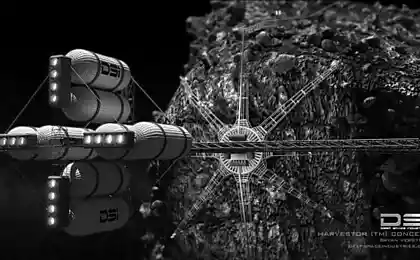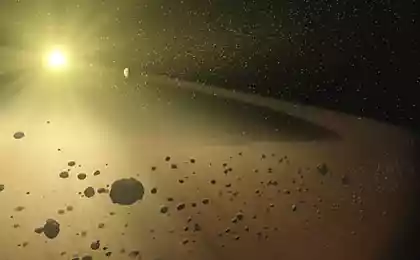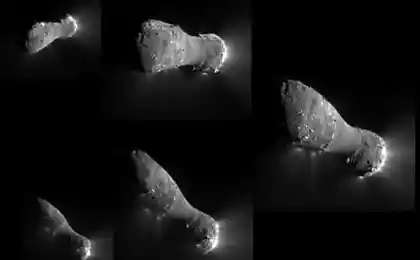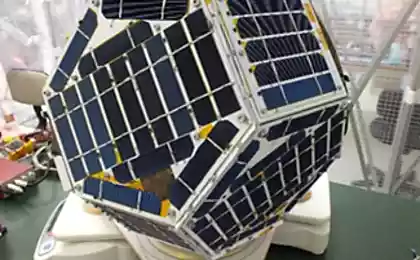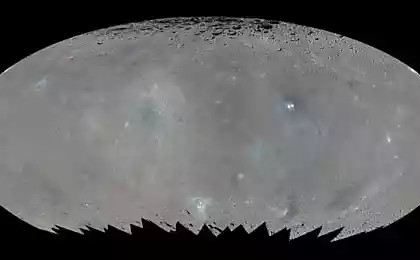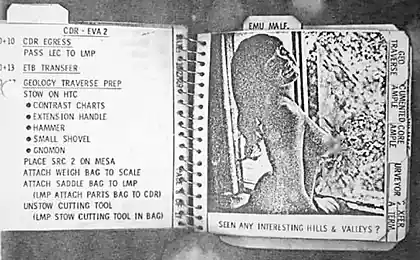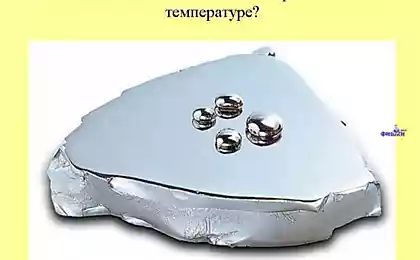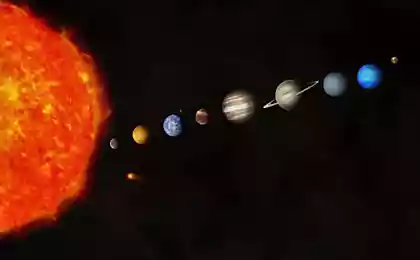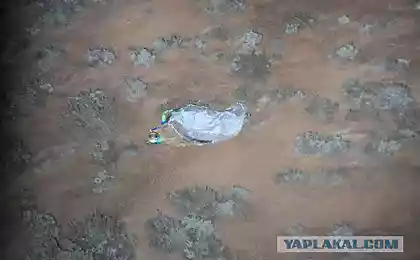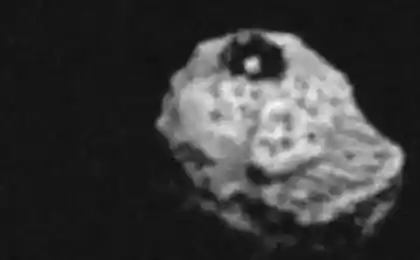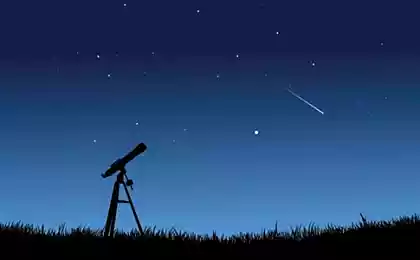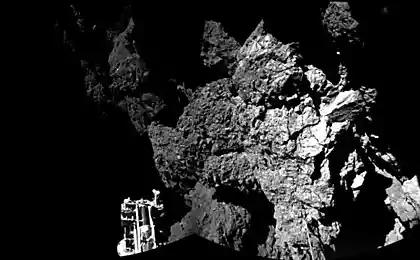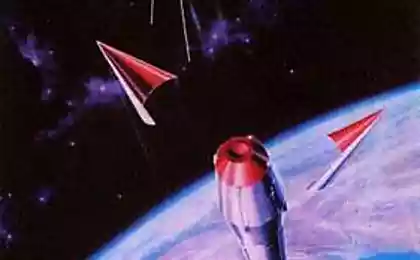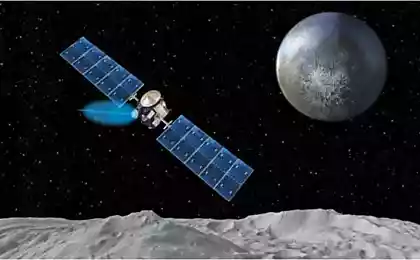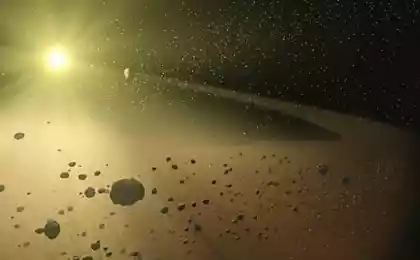1115
Japanese space probe Hayabusa-2 went to the asteroid 1999 JU3

The launch of the Japanese spaceport Tanegashima i>
Yesterday, the Japanese experts carried out a successful launch probe Hayabusa-2. The probe was sent using its own carrier rocket H-2A, with the Japanese spaceport. The main objective of the probe - fly to an asteroid in 1999 JU3, collect samples of the substance of the cosmic body and bring it all back to Earth.
By asteroid 1999 JU3 probe gets only in 2018, after which stay on the surface of the object and a half years, and at the end of 2019 Hayabusa-2 will go with selected samples of the asteroid material back to Earth.
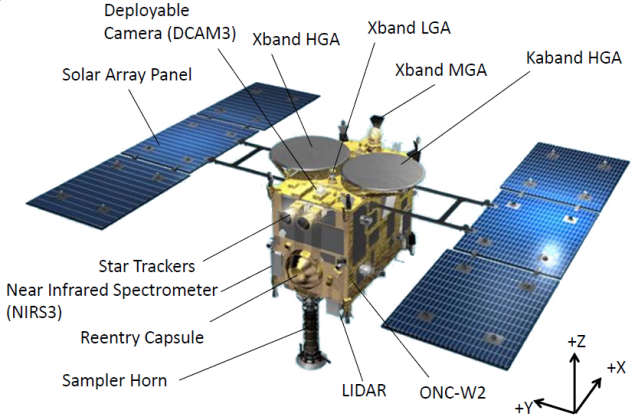
Hayabusa-2 i>
total cost of the project to create asteroid probe is 142 million US dollars. The device is equipped with solar panels, radio module for communication with the Earth, as well as a gun that will destroy all Reptilians shot on an asteroid impactor.
probe landed on the asteroid bouncing lander MASCOT and small rovers MINERVA2. Module weight is 10 kilograms MASCOT. And the rovers, and the module will explore the surface of the asteroid, the data will then be transmitted to Earth. MASCOT equipped with infrared spectral microscope, spectral camera, magnetometer, radiometer.
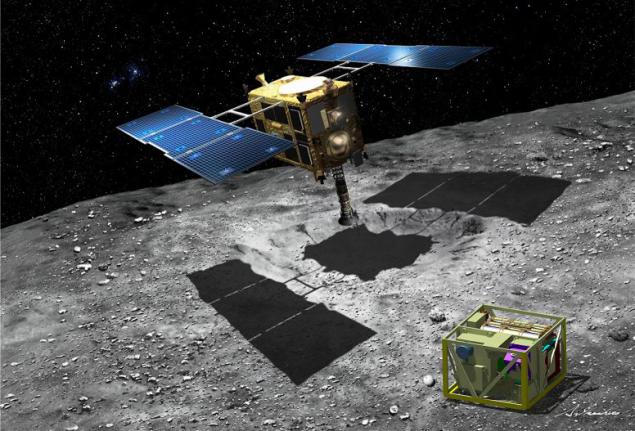
It looks like MASCOT i>
After reaching my destination probe begins to map the surface of the asteroid, and the selected point will be made "shot" (using the impactor SCI (Small Carry-on Impactor)), after which the crater formed. Establishment of a reliable guidance system on an asteroid, in order to obtain the possibility of sighting "firing" of high precision, was discussed in a separate phase of the project.
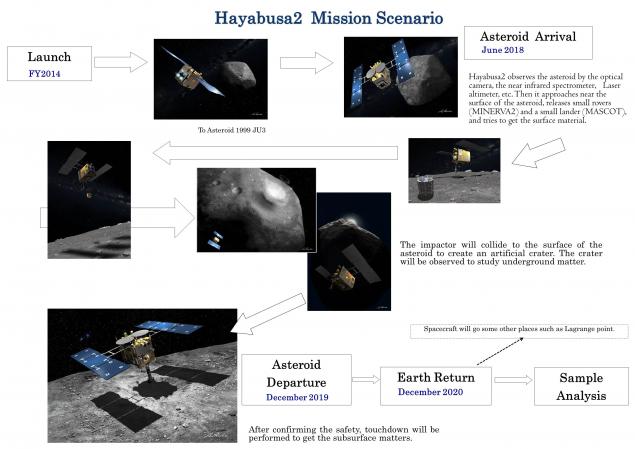
Stages of the mission ( scheme in full resolution )
As is the case with the comet Churyumov-Gerasimenko, scientists first choose several possible points for unloading the probe and "shot" and then, after a careful analysis of data on each point will be selected only landing zone. The material ejected in a collision with an asteroid impactor, will be collected by the probe, which reaches out to the asteroid, then the samples will be delivered in a special capsule to Earth. If all goes well, samples of asteroids will be delivered by 2020.
Asteroid 1999JU3, which was selected for the study, refers to a group of Apollo. In this case, the outer body as crosses Earth's orbit and the orbit of Mars. The diameter of the asteroid is 0, 92 kilometers away, and it was opened in 1999. Own name, as is the case with the comet Churyumov-Gerasimenko, the asteroid is not.
Source: geektimes.ru/post/242444/
In the US, the industry of solar panels employing more workers than in coal mines
Cute Irish anecdote
